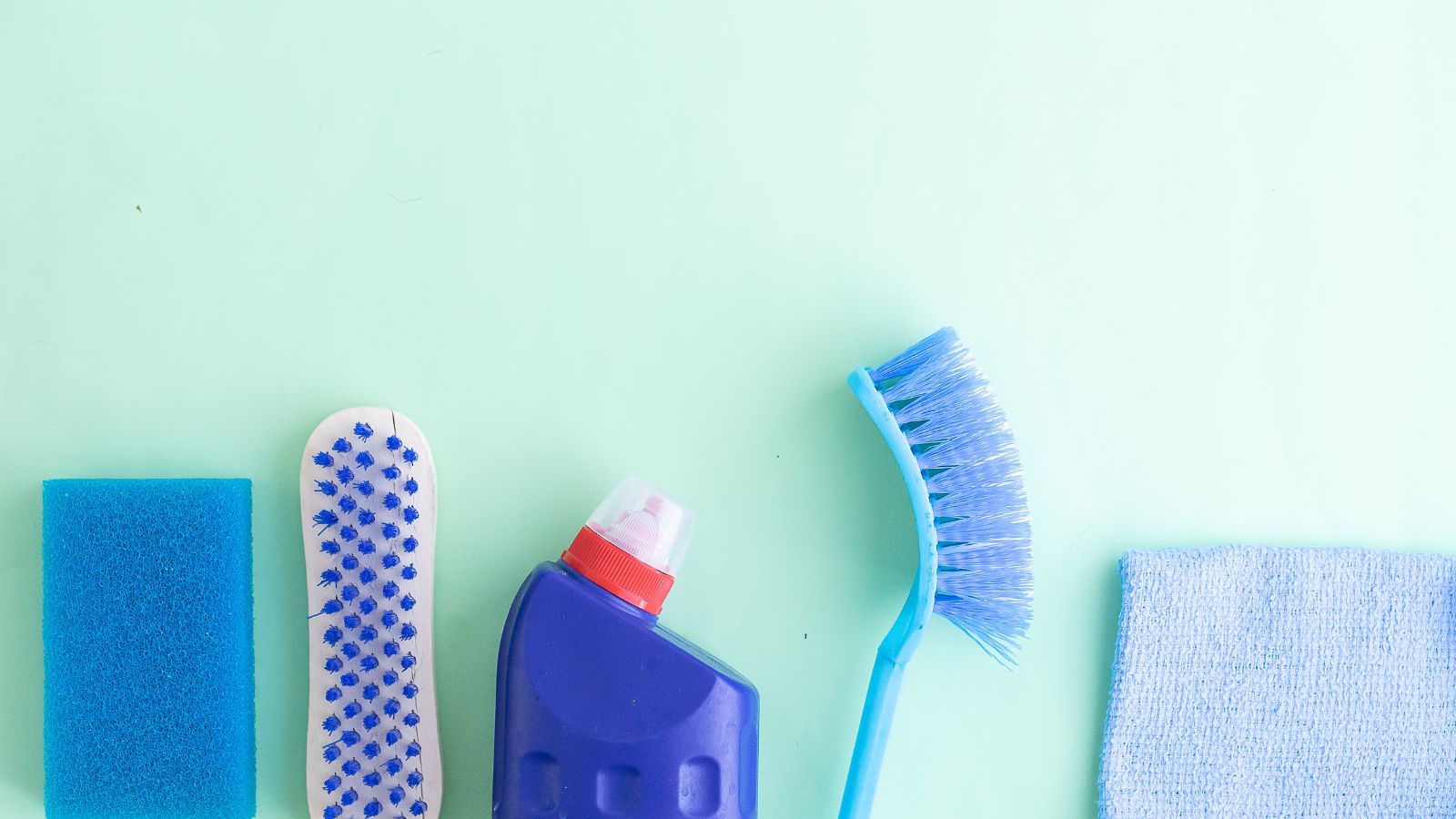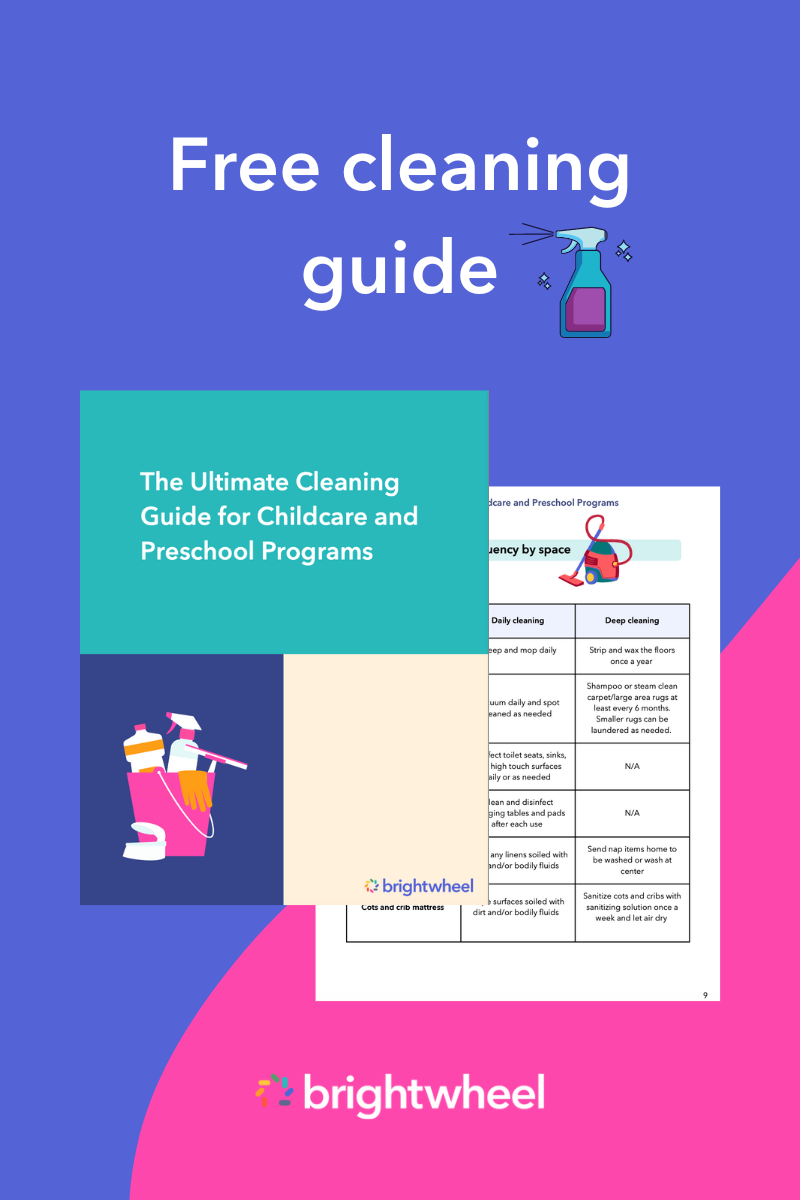
Keeping a childcare center or preschool clean and hygienic is crucial to creating a safe learning environment for children. Unfortunately, it's all too easy for germs and bacteria to spread like wildfire in these settings, making it critical to regularly clean and sanitize every nook and cranny of the facility. But with so many different areas to cover, it can be tough to ensure that every item is cleaned thoroughly. That's where a daycare cleaning checklist comes in handy.
Not only can a cleaning checklist help you keep track of what has been cleaned and what still needs attention, but it can also help minimize potential health risks associated with unsanitary environments. In this article, we'll delve into why it's so important to have a daycare cleaning checklist in place and how it can help you maintain a safe and healthy environment for the children in your care.
The importance of cleaning and sanitizing your center
Cleaning and sanitizing your center is crucial to running a high-quality childcare program. Children are messy, and as a result, daycare centers can be a breeding ground for germs. If you don’t attend to these everyday messes, germs can easily spread among children, educators, and workers.
Below, we look at the reasons why cleaning is such an important aspect of your daily operations:
Promotes a healthy learning environment
By prioritizing a regular cleaning and sanitizing routine you can keep your children, staff, and families healthy. Cleaning removes visible dirt and germs from surfaces, while sanitizing is typically done with weaker bleach solutions or sanitizing sprays to reduce the number of germs on surfaces to levels that public health codes consider safe. All of this helps to reduce the spread of germs and bacteria at your center.
Follows state guidelines
Proper cleaning and sanitizing are important not only for the health of your staff and children but also for compliance with state licensing guidelines. Guidelines will vary from state to state and are detailed in each state’s licensing requirements. Your state may also have guidelines for the proper storage of cleaning supplies and equipment to ensure that they are not accessible to children.
Establishes a consistent cleaning routine
Your childcare facility needs to be cleaned and sanitized on a consistent basis. Certain surfaces or items will need to be cleaned and sanitized daily, while others, such as food preparation countertops and feeding bottles, will need to be cleaned and sanitized after each use.
To prevent buildup of bacteria and dirt, it’s also important to deep clean certain surfaces on a weekly basis. This may include the outdoor playground, refrigerator, pantry, sink, toilet, and more. Look for hidden surfaces and nooks and surfaces that are behind or underneath different objects.
You may also choose to hire a professional cleaning service on a weekly or monthly basis if you have a larger facility that is difficult for you and your staff to thoroughly clean. They will also be able to reach some surfaces you may not have access to, such as ceiling fan blades, high windows, and the areas behind appliances.
Minimizes exposure to toxins
As you plan for cleaning and sanitizing your daycare, also be aware of the products you, your staff, or a cleaning service is using. In addition to surfaces the children can touch, you must also consider the toxic, hazardous chemicals found in some cleaning products that the children will breathe in.
The United States Environmental Protection Agency (EPA) provides resources for green cleaning, which entails using products without the most potentially toxic ingredients. When you are shopping for cleaning products, look for statements that say things like “non-toxic,” “biodegradable,” or “water-based,” and be wary of those that say “corrosive,” “irritant,” “caution,” or “wear gloves during use.”
Anytime cleaning products are used, even green ones, ensure that surfaces are thoroughly dried before children touch them and be sure to open windows as you clean to keep fresh air circulating.
Daily cleaning checklist
The Centers for Disease Control and Prevention (CDC) has recommended procedures for cleaning and disinfecting early care and education settings. Some daycare areas need daily cleaning such as floors and door knobs, while areas like eating and diapering surfaces require a more rigid and thorough cleaning routine after every use.
To help you manage your cleaning checklist, assign specific staff to each cleaning task to ensure that crucial areas such as tabletops, toys, and play surfaces are cleaned as needed.
Surfaces that need to be cleaned daily include:
- Infant and toddler toys
- Counter tops
- Door knobs and cabinet door knobs
- Drinking fountain
- Napping blankets, if they’re shared
- Toilets and sinks
- Floors
Some surfaces are sensitive and must be cleaned and sanitized after every use. They include:
- Potty chairs
- Isolation areas
- Diapering spaces
- Dining tables after meals
- Food prep areas
- Kitchen sinks
- Mouthed toys
- High chairs (before and after meals)
- Dishes and utensils
Other daily cleaning tasks that can arise include:
- Wiping liquid spills and splashes
- Dusting furniture
- Vacuuming both sides of your carpet or rugs
- Opening the windows for clean air circulation
- Cleaning the fridge
- Cleaning storage rooms
- Defrosting the freezer
- Cleaning out food trapped in the dishwasher
- Scrubbing kitchen floors
- Emptying garbage cans
Weekly cleaning checklist
Areas that require weekly cleaning, sanitizing, and disinfecting include:
- Walls
- Refrigerators
- Books and bookshelves
- Older children’s toys
- Art rooms and art supplies
- Nap mats and blankets
- Trash cans
- Cribs and bedding
Monthly or quarterly cleaning checklist
While some surfaces need daily or weekly cleaning, some items are safe to clean monthly or quarterly. These surfaces include:
- Curtains, blinds, and windows
- Furniture, windowsills, and baseboards (deep cleaning)
- Shelves, closets, storage containers (clean, wipe, and disinfect)
- Plumbing (check for any leaks)
- Clean carpets (twice a year)
Top tips for cleaning your daycare
Here are some clever hacks to make daycare cleaning easier and more effective:
1. Use color-coded cloths
When choosing cleaning cloths, designate specific colors for different rooms to avoid confusion. For example, you can use red cloth for the kitchen, yellow for classrooms, and black for bathrooms and diaper changing stations.
2. Label cleaning products by area
It's also a good idea to label cleaning products by area. For example, some detergents have very harsh chemicals and shouldn’t be used in areas where children frequently visit or on items like children's toys. Only use disinfectants that are appropriate for the surface material.
3. Set up recurring orders for cleaning supplies
Budgeting, planning, and scheduling recurring orders for your cleaning supplies avoids delays with your cleaning operations. Ensure your order includes regular cleaning products like detergents, disinfectants, and sanitizers.
4. Set up several sanitizing or hand washing stations
We unknowingly collect germs when we open doors, change diapers, or wipe children's faces. It's impossible to avoid germs completely, but you can prevent spreading them by washing your hands regularly. Whether or not you wear gloves while cleaning, it is still important to wash your hands thoroughly with soap and water before transitioning to another area.5. Shuffle cleaners every few weeks
Although consistency makes cleaners experts in their designated areas, boredom can lead to poor performance. Shuffling cleaners prevents this from happening, and if there are neglected surfaces, they can be discovered during these changes and corrected.Daycare cleaning supplies checklist
Besides following a cleaning checklist, ensuring you have the right cleaning supplies is crucial. To save on cost and avoid cleaning delays, shop for cleaning supplies weekly or monthly, depending on your preference.
Your daycare cleaning supplies checklist can include:
- Hand sanitizer
- Wet wipes
- Paper towels
- Bleach
- Disinfectant spray
- Dishwasher
- Vacuum cleaner
Hand sanitizer
Hand sanitizer is one of the most important daycare cleaning supplies because children touch and put many things into their mouths. Ensure you have a sanitizer bottle in the following areas:
- Daycare entrance
- Bathroom
- Kitchen
- Eating area
Wet wipes
Wet wipes are more convenient than wet towels. They can help clean up minor messes, sticky surfaces, and children’s hands. Cleaners can carry some wipes in their pockets, and you can also place them near large trash cans around the school. Other places you can put wet wipes include:
- Play area
- Kitchen
- Eating area
Paper towels
You’ll need lots and lots of paper towels. An average daycare will use two or three rolls of paper towels in a day, but that amount can vary depending on the size of your daycare. You can use paper towels to clean dirty mouths, dry wet hands and disinfectant spray, and clean up minor spills.
Bleach
When removing stubborn stains and disinfecting items, good old-fashioned bleach is still our number one choice. However, bleach can be harsh on children’s skin. Therefore, it’s essential to rinse items or areas after using bleach. If possible, areas that need bleach for cleaning should be cleaned after school hours.
Disinfectant spray
You can use a disinfectant spray like Lysol for areas that require sanitizing when children are around. Ensure you confirm it’s safe for children and follow the manufacturer’s application instructions.
Dishwasher
A dishwasher is more efficient than cleaning dishes by hand in busy environments such as a childcare center. It also prevents dirty dishes and bacteria from piling up in the sink and spreading into food preparation areas. Specific cleaners should be assigned to load, offload, and organize the dishes and utensils.
Vacuum cleaner
Vacuum cleaners are a game changer in daycare cleanliness. They can dry wet areas quickly and eliminate dirt and bacteria we can’t see with our naked eyes. A vacuum cleaner also has special attachments to help you access hard-to-reach and hidden places.
Conclusion
Keeping a daycare clean is a top priority for every daycare management team. A daycare cleaning checklist ensures that any cleaning crew member can clean the facility if the need arises and can also help you keep track of all areas that need to be cleaned so that important areas aren’t neglected. With a thorough checklist in place, you can ensure your program is a healthy and safe place for you, your children, and families.
Brightwheel is the complete solution for early education providers, enabling you to streamline your center’s operations and build a stand-out reputation. Brightwheel connects the most critical aspects of running your center—including sign in and out, parent communications, tuition billing, and licensing and compliance—in one easy-to-use tool, along with providing best-in-class customer support and coaching. Brightwheel is trusted by thousands of early education centers and millions of parents. Learn more at mybrightwheel.com.




